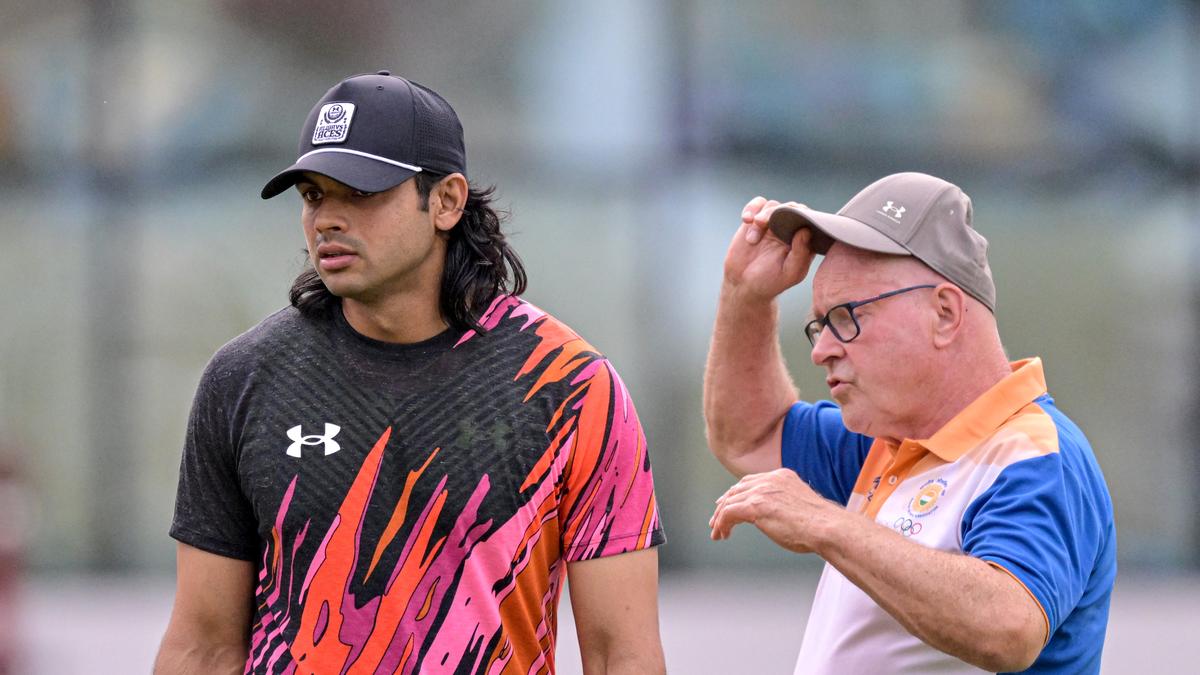Klaus and effect: How Klaus Bartonietz’s mentorship transformed Neeraj Chopra’s game
Himanshu Jakhar might be the reigning Asian Under-18 javelin champion and one of India’s best prospects in the sport, but on a blistering evening at Hisar’s Agricultural University last month, he was discovering just how much there is still left for him to learn.
To the average observer, the 17-year-old’s throws seem fine — landing in the 70m range with smooth trajectories. But for Himanshu, the approval he craves for must come from a figure standing just off the runway — a septuagenarian in a baseball cap who is video-recording his throws on an iPad. When he doesn’t get the thumbs-up he is hoping for, Himanshu studies the footage to check where he went wrong. This time, it looks like his left leg is bending too much as it blocks, costing him crucial energy.
Rather than be discouraged, Himanshu makes over a dozen more throws over the course of the evening, with the belief that he could do better. It’s clear why he wants this man’s approval — it’s not every day that Dr Klaus Bartonietz comes over to critique his throws. By the end of the session, Himanshu is all smiles.
Klaus may have written many of the textbooks on javelin throw, but his fame as one of the most recognised foreign coaches across sports in India is majorly due to his six-year tenure as coach of Neeraj Chopra. Together they created history by winning gold at the Tokyo Olympics, followed by silver at the 2022 World Championships, gold at the 2023 Worlds, and finally silver at the 2024 Olympics in Paris.
Klaus concluded his six-year partnership with the Indian not long after the Paris Games, but last month he was back in India. Although in the country only for a week on his most recent trip, he plans to return more frequently in the months to come.
The biomechanics expert will be creating training plans, conducting online classes for coaches, and mentoring younger athletes including Himanshu, Deepika (a silver medallist at the 2022 Asian U-18 Championship), and Jyoti (a former junior national gold medallist).
Having worked with India’s all-time great in the sport, Klaus is aware of the gulf in quality. “In Germany, when we were trying to develop talent, we would say it was like making candy from sh*#t. Here, it’s like making a diamond from the dung heap. It’s a different kind of challenge, but a new challenge,” he shrugs.
Klaus hadn’t imagined he would be back in India so soon. When the 73-year-old retired after parting ways with Neeraj last year, he had been looking forward to going home. “I first told Neeraj about retiring after the Tokyo Games, but he convinced me to stay for some more time. He told me, ‘Coach, it’s just another three years until Paris.’ So, I stayed. But both of us knew that I was going to leave after that. So, after Paris, he didn’t try too hard to make me stay,” says Klaus.
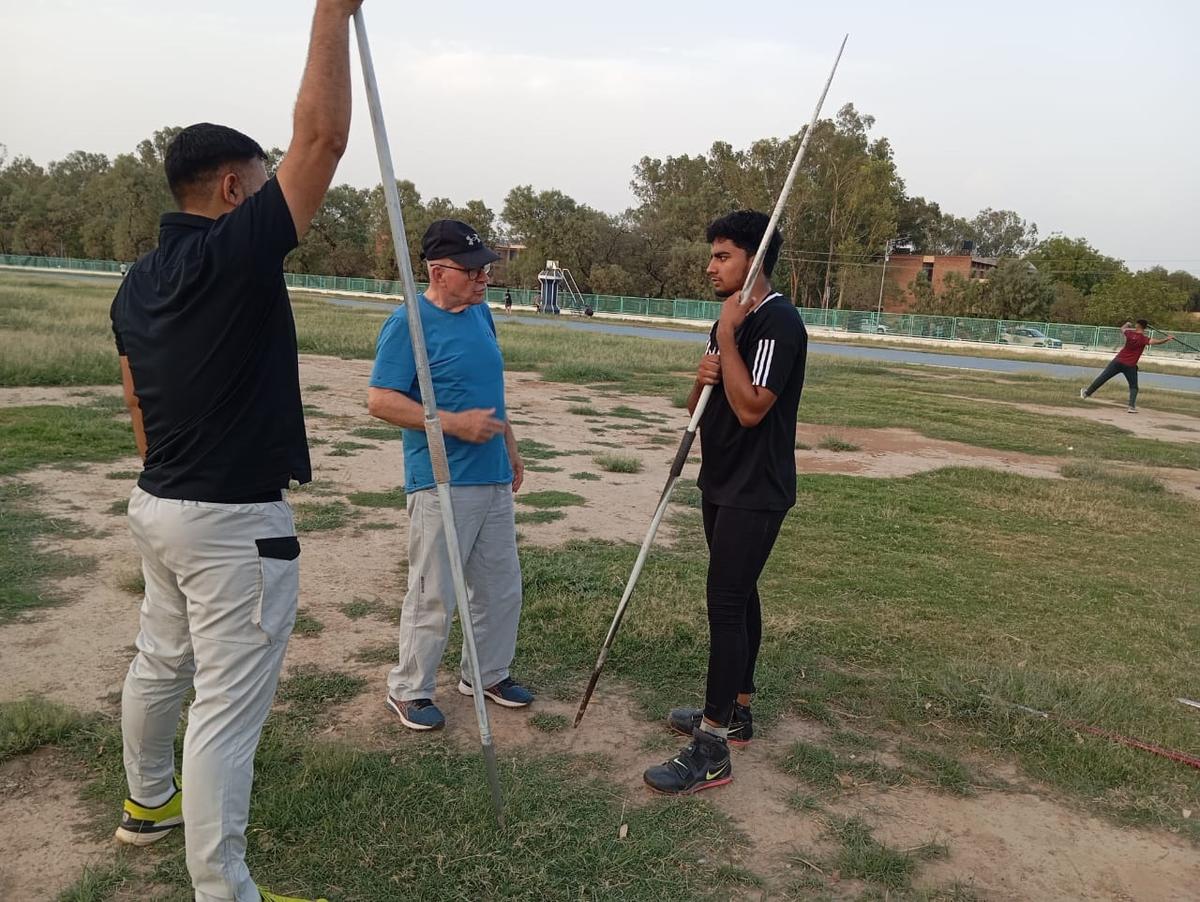
Expert advice: Young javelin throwers like Himanshu (right) have the privilege of being mentored by Klaus.
Expert advice: Young javelin throwers like Himanshu (right) have the privilege of being mentored by Klaus.
Klaus’ home is in the village of Oberschlettenbach, located in south-west Germany, just across the French border. The difference between Oberschlettenbach and Hisar is stark. The former is home to just 130 residents, with pleasant summers, scenic hiking trails, forested mountains, and old castles built during the Holy Roman Empire. At the heart of his village is a fountain that draws crystal-clear drinking water from the surrounding mountains. Hisar, in contrast, is a bustling industrial town of over three lakh people, with temperatures reaching 45 degrees Celsius.
Oberschlettenbach might be idyllic, but Klaus’ first project was yard work. “In six years, everything had been growing too much. I had to bring everything to order. In November, I was cutting overgrown trees for firewood. Then at the start of winter, I collected wild mushrooms. In the spring, there were flowers to be planted, and the apple and cherry trees were blossoming,” he recalls, in a conversation with Sportstar.
Klaus and his wife also visited family members, something he never had time for during his previous stint in India. “My daughter is in Australia, so I was able to fly there and visit my two granddaughters. I told them about my time at the Olympics. I think they found it interesting, which was nice,” he says.
It was impossible to keep him away from the sports ground, though. Klaus has been mentoring Swiss heptathlete Lucia Acklin for a while. “When Neeraj and I were in Switzerland, I contacted this young heptathlete, who trained with us. Neeraj gave her some advice as well. Then last year, she won a silver medal at the World Championships (in Lima). That was quite good,” he recalls.
But Klaus was also returning to the grassroots. “There’s a small club run by the administration of the town near my village. It’s about 50 km away, but I’d go there and coach the children in javelin and discus. They only pay 12 euros an hour – like minimum wage – but it’s something I enjoyed doing,” he recalls.
It was around this time that Manisha Malhotra, president of Inspire Institute Sport, offered him the role of consultant in Hisar. “Manisha was like ‘don’t let him go so easily out of India. Let him come back and help us to work with our younger throwers’. So, we thought about such a project,” Klaus says.
Klaus admits he has a secondary motive to return to India. “I love the mountains. Wherever I go as a coach, I make it a point to go to the mountains. When I was in China, I travelled to the Pamirs near the Afghanistan border. One of the reasons I chose to come to India as a coach was because I’d always wanted to see the majestic Himalayas. I first explored them near Shimla, then I travelled from Mussoorie down the Yamuna, and then just before I left, I went to the Rohtang Pass near Manali. But there’s a lot I haven’t been able to do. I want to see the Nubra Valley and Spiti. Maybe I’ll do it this time,” he says.
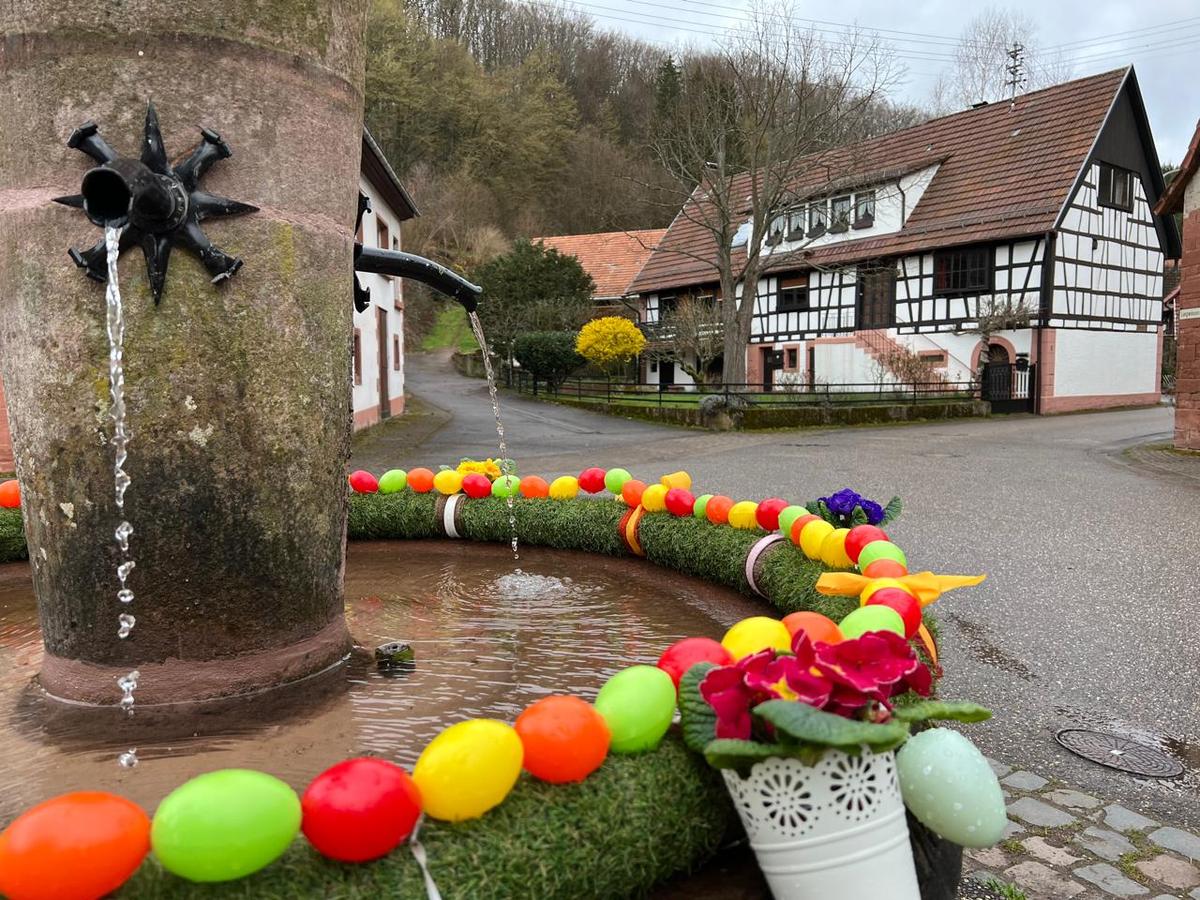
Lost in paradise: Besides training young athletes, Klaus was also drawn to India by a desire to visit the Himalayas — a fascination rooted in his childhood in Oberschlettenbach, a village nourished by mountain springs (centre) and surrounded by forested hills.
| Photo Credit:
Special Arrangement
Lost in paradise: Besides training young athletes, Klaus was also drawn to India by a desire to visit the Himalayas — a fascination rooted in his childhood in Oberschlettenbach, a village nourished by mountain springs (centre) and surrounded by forested hills.
| Photo Credit:
Special Arrangement
Impressive as these heights are, equally impressive are the ones he scaled together with Neeraj.
When he arrived in India in 2018, Klaus wasn’t specifically meant to work with the then 20-year-old. “At that time, Neeraj was training under Uwe Hohn. When I first came, I was working with the other athletes — Shivpal, Annu (Rani) and others. One day there was a meeting with (Lalit) Bhanot, the Chief Coach, the president of the AFI, and Uwe and Neeraj. And then, at the end of the meeting, Neeraj said, ‘I won’t work anymore with Coach Uwe.’
“At that time, I wasn’t even aware that there was any issue between the two of them. They had just won the Commonwealth Games and Asian Games together. But not long after that, in the spring of 2019, Neeraj and I started working together,” Klaus remembers.
The early days of their partnership coincided with a series of injuries for Neeraj, who eventually had to undergo surgery on his elbow that kept him out of action for most of 2019. For all of Neeraj’s talent, Klaus admits he wasn’t thinking about Olympic gold at that point. “At the time we started working together, we were mostly focusing on his rehab. So, we did a lot of gymnastics work. That’s when I got an idea of just how well coordinated he was. He had a lot of endurance as well, which I saw during his training sessions in South Africa.
“But did I think he would become Olympic champion in Tokyo? No. Of course not. I thought he would make the final, but I didn’t think he was going to win gold. The goal back then was to make the final, then get to the last three throws and see how that went. I think I only really started believing it when he made that throw of 87m in the Olympic final and there was no one who was getting close,” he says.
But it wasn’t Neeraj’s physical attributes that stood out to Klaus back then. “Neeraj wasn’t the strongest. There are other throwers who were much stronger than him, but the stronger he got, the poorer his throws became — and that was because he stopped using his brain. One thing that always stood out about Neeraj was just how professional he was. He has a few people he really trusts. There was this friendship he had with (physio) Ishan, but it was built on professionalism.
“He was always on time, always prepared. He never forgot anything. Just a very sharp person with a very sharp mind. He was very fixated on the javelin throw. He knew almost everything there was to know about other athletes and their performances. Apart from that, one of Neeraj’s greatest strengths is his creativity. He is always curious about various exercises — why something worked and why others didn’t. He was always looking for ways to improve,” he says.
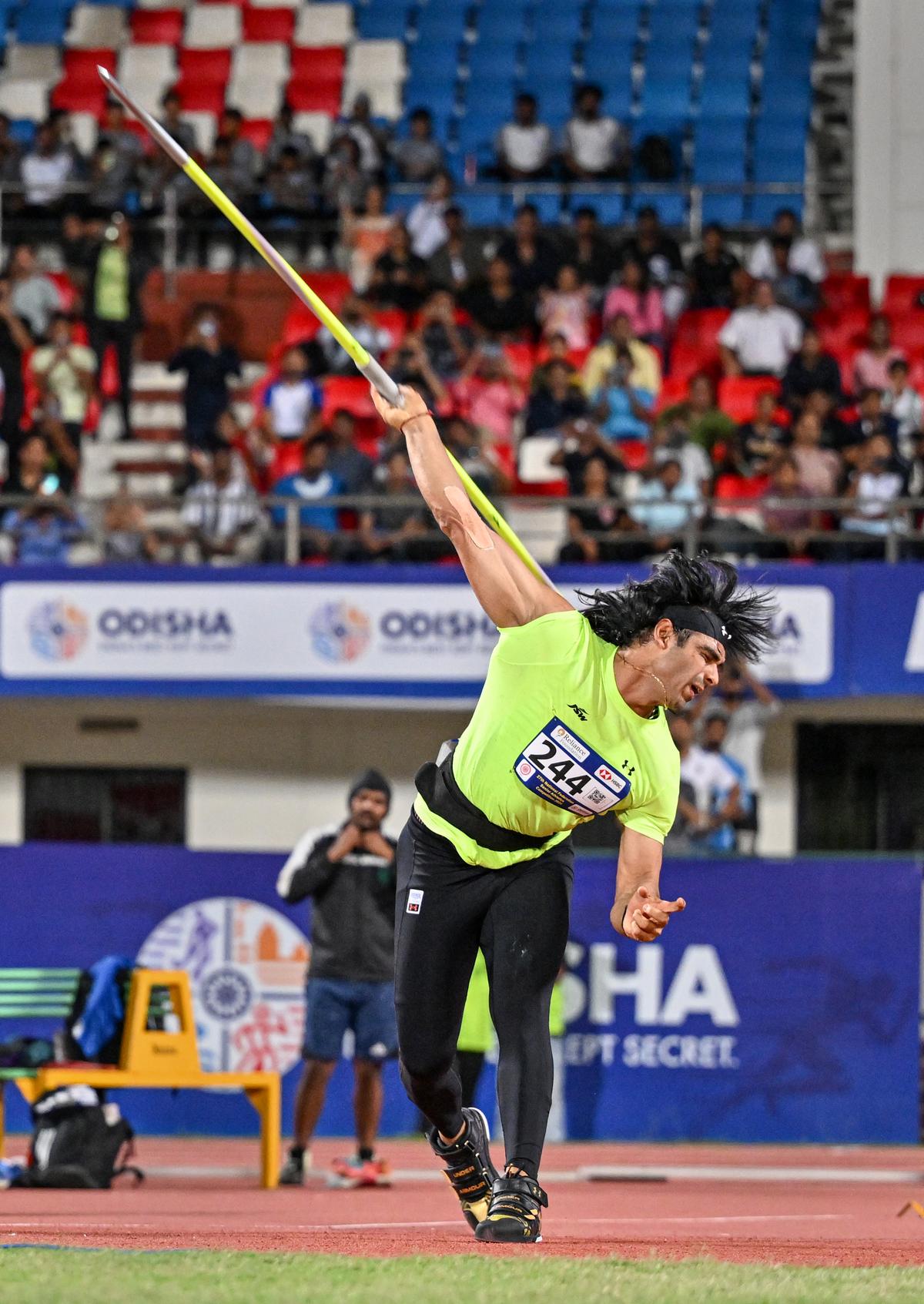
“One of Neeraj’s greatest strengths is his creativity. He is always curious about various exercises — why something worked and why others didn’t. He is always looking for ways to improve,” says Klaus Bartonietz.
| Photo Credit:
K. R. Deepak
“One of Neeraj’s greatest strengths is his creativity. He is always curious about various exercises — why something worked and why others didn’t. He is always looking for ways to improve,” says Klaus Bartonietz.
| Photo Credit:
K. R. Deepak
But there was something even more important that Neeraj had, feels Klaus. It was his sense of honesty. “Those are Neeraj’s best qualities. His brain and his honesty,” says Klaus. According to him, that is in short supply in Indian athletics. Athletes took advantage of each other, and intrigue was commonplace.
“I don’t think the system in India is very honest. The middle administration wants to feel important regardless of what is needed. Very early in my time in India, I came across an incident when a senior athlete took money from a younger thrower. The junior didn’t even realise he was being taken advantage of, and I had to go and recover his money,” says Klaus.
Uwe Hohn, Neeraj’s former coach, was subject to this too. “Before the Tokyo Olympics, it was clear that there were officials trying to get rid of him or at least not renew his contract. They had a couple of senior athletes give evidence that Uwe was coaching an athlete from Australia instead of paying attention to them. I was shocked at that. I said nothing like this had happened. It wasn’t that Uwe was a bad coach. He had taken Neeraj to the Commonwealth and Asian Games gold. And when I asked these athletes why they had done this, they just said it was what they had to do,” says Klaus.
He says he considered resigning alongside Uwe “as a matter of principle” before ultimately deciding to stay on with Neeraj.
There was none of this constant intrigue around Neeraj though. Klaus still isn’t entirely clear why. “I think some of it probably has to do with his upbringing. Most of family members are farmers and is a very decent group of people. But there was a clear honesty to Neeraj which was not common when I worked here. The other seniors would treat juniors like servants. They would have them carry their equipment after their sessions. I’ve never once seen Neeraj not carry his own javelins himself. There was never this sense of superiority — and this was after he became an Olympic champion,” he says.
Some of Neeraj’s honesty, Klaus feels, came from his motivation for getting into sport in the first place. “I think a lot of the problem comes when you get into the sport because you are thinking about the outcome. I remember a piece of news I saw before the Tokyo Olympics, where Shivpal (Singh) was meeting the UP Chief Minister and he said something like India would win three medals but was not sure about the colour.
Perhaps this happened to Johannes Vetter too. He was going into the Olympics as the huge favourite. I think he was thinking about breaking the world record there, but in the end, he picked up an injury. But I always felt it was very different for Neeraj. He was motivated by the process of throwing, never by the outcome. Because of that, it was never difficult to keep him focused,” says Klaus.
His own role, he says, was fairly simple. “As a teacher, I only had to support him in training and keep him on the right path. I don’t think there was any pressure on me to work with Neeraj. I think the pressure was more on him. As a coach, I didn’t think I could do it anymore, so there was no point in panicking. My job was to stay quiet and not do anything stupid that would disturb him,” says Klaus.
While Klaus was able to play this role to perfection, some instances were harder than others. “The one time I was really nervous — like I was back in school giving an examination again — was before the finals of the Tokyo Olympics,” he says.
The Olympic gold, unexpected as it was, will always be a career-defining medal for Neeraj. “It is, of course, the one I am most proud of. Not the World Championship. The Olympics is what made Neeraj great. All his sponsorships and fame happened because of it, without which he wouldn’t have his millions. Maybe he would still have won the Worlds, but the Olympics is his greatest achievement,” says Klaus.
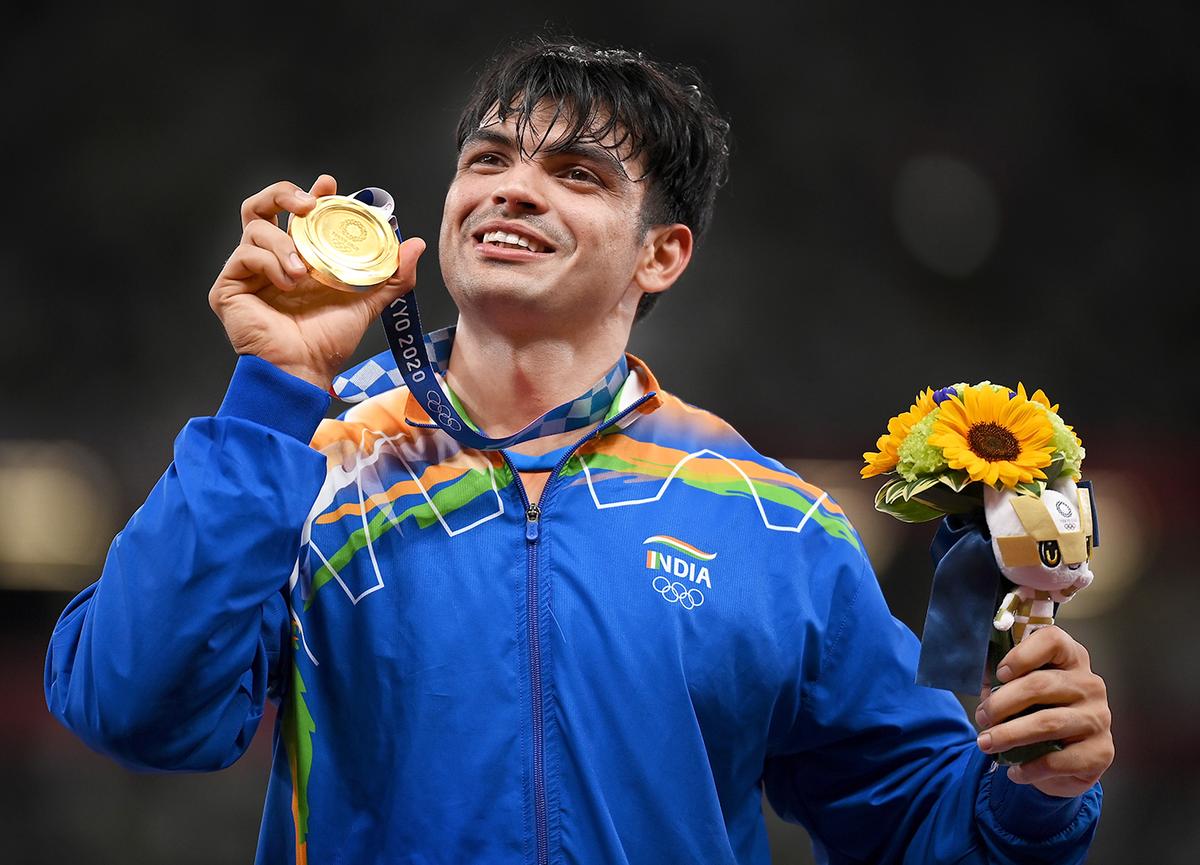
Neeraj poses with his gold medal at the Tokyo Olympics.
| Photo Credit:
Getty Images
Neeraj poses with his gold medal at the Tokyo Olympics.
| Photo Credit:
Getty Images
But Klaus clarifies that it didn’t define him. “Nothing changed with Neeraj after the Olympic gold, and again I think that is because of his motivation for the sport. A lot of athletes get into the sport maybe because they wanted money or a job. But for Neeraj that wasn’t the case, and I think that’s where the difference is. So even though there was a lot of money, and there were all these girls who wanted to marry him, he didn’t get distracted. I think the only thing that changed was that he got older and even more mature,” says Klaus.
But while he didn’t succumb to distractions, Neeraj was limited by injuries. Some have been well documented — like the elbow he had surgery on in 2019 and the recurrent groin injury that’s bothered him over many years. There are also lesser-known ailments Klaus reveals — such as the time Neeraj fractured his little finger while practising hurdle jumps before the 2023 Worlds. But perhaps Klaus’s toughest moment came in 2022, he says, when Neeraj picked up a groin injury during a practice session.
“He thought this was one of his best-ever workouts when it happened. He had warmed up well too. And he was throwing with a lot of power when he picked this up. When he got that, I felt it was going to be difficult to finish the season. We went to see a lot of specialists in Dubai, Italy and France,” says Klaus.
Klaus credits Neeraj’s eventual recovery to physiotherapist Ishan Marwaha’s “creative rehabilitation work”. However, he admits the injury did limit Neeraj’s performance and says he wonders if he could have managed Neeraj’s training better.
“I wonder if perhaps he was overloaded in training. That might have been a problem. But Neeraj was always someone who pushed himself. He always wanted to have a really good workout. That was his philosophy. I think 90 percent of his workouts were really hard ones. In all our time together, I remember there was just one day when he felt tired from throwing the day before and had to take a break,” says Klaus.
Unfortunately for Neeraj, this time coincided with the rise of Pakistan’s Arshad Nadeem, who would go on to beat him with a record throw at the Paris Games.
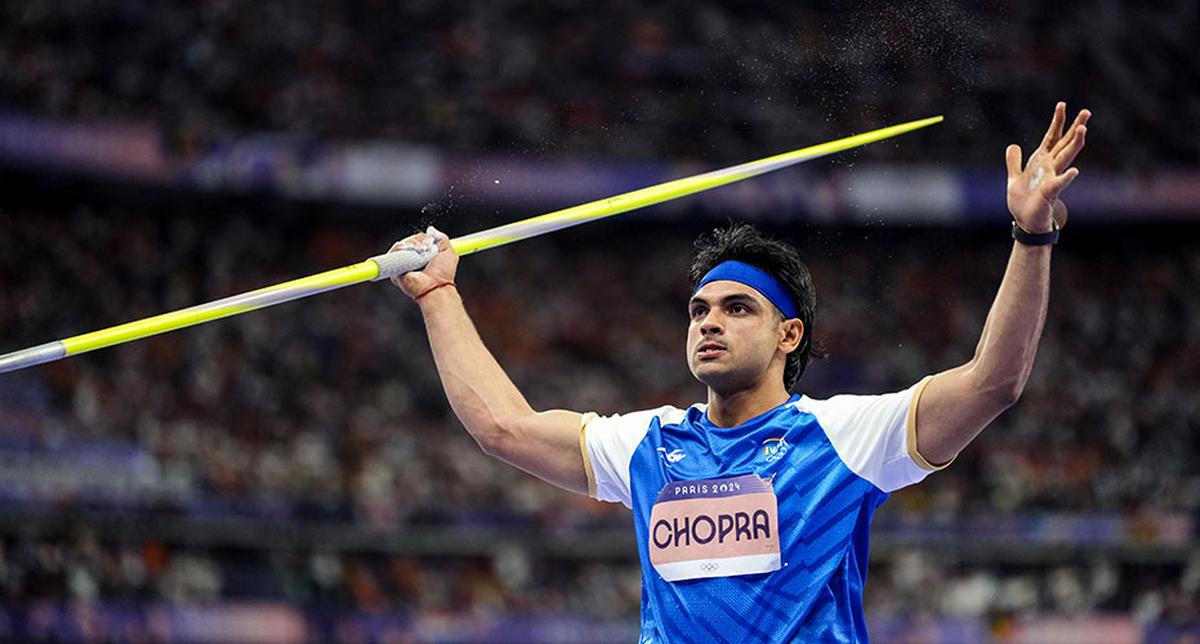
Neeraj Chopra at the Paris Games.
| Photo Credit:
PTI
Neeraj Chopra at the Paris Games.
| Photo Credit:
PTI
“I knew before Paris that it was going to be very difficult to win a second gold. Especially if you have to deal with athletes like Arshad. We knew Arshad had an injury because he had surgery, but right after that he was throwing over 90 metres! He’s not a very fast thrower but he has textbook technique. I knew it was going to be difficult after he got that 92-metre throw (in his second throw of the Olympic final), but I thought Neeraj had that capacity. He got an 89-metre throw as well, but it wasn’t enough. I am not disappointed.
“It wasn’t that we did something wrong. Neeraj didn’t have his best day, and that coincided with Arshad having a near perfect day. You can’t be angry at Neeraj for this. You must accept it. Neeraj did so as well and he congratulated Arshad for it,” says Klaus.
Klaus says he still keeps in touch with his former trainee. “We don’t speak, but we do send messages to each other. I congratulated him after he threw 90m (in the Doha Diamond League),” says Klaus.
That throw, says Klaus, is a testament to how Neeraj — who now trains under world record holder Jan Zelezny — is still getting better. “I think there was good wind in Doha which helped the throw, but what really stood out for me was Neeraj’s run-up speed. He was so fast. It was a very powerful run-up,” says Klaus.
Neeraj has spoken of being injury-free, especially regarding the persistent groin issue, and Klaus says that has played an important role behind his runway speed. “The fact that his groin injury is healed doesn’t really impact his running speed because the groin really gets activated at the crossover stage which follows the run-up. But at the same time, you won’t run in so fast if you are afraid that your groin can’t handle that power. Being injury-free is allowing him to run faster now. He’s more confident that he can turn with that speed,” says Klaus.
Despite becoming only the 26th man to breach the 90m barrier, Neeraj was beaten to first place by Julian Weber in Doha. He himself called the moment a bittersweet one, but Klaus believes he’ll recover quickly enough.
Julian Weber beat Neeraj in Doha Diamond League.
| Photo Credit:
REUTERS
Julian Weber beat Neeraj in Doha Diamond League.
| Photo Credit:
REUTERS
“Neeraj goes into each competition thinking it’s a new competition and the dice has to be rolled again. What was before does not count. It’s the same even now. He throws 90m and then Weber comes and throws bigger. But he’s someone who is fine with it. If someone else does better than him, he’s OK. It’s a good quality to have. Otherwise, you take too much stress,” he says.
Klaus hopes Neeraj manages to stay injury-free if only so they could meet again. “There is a Diamond League in Paris in July. I might be back home at that time, but I think I can take the train to Paris and meet him there,” he says.
But Klaus has higher expectations for Neeraj than just another Diamond League. “I think he can compete for many more years. He should compete in Los Angeles, of course, but I also think he can compete in Brisbane. I myself want to be around in another 10 years and I’d like to see this,” he says.
Although he’s back in India looking to unearth more talent, Klaus knows it won’t be easy. For one, he’s not going to be spending as much time in India as he had during his previous stint. Then of course there’s the question of whether there are more diamonds out there.
“You had two very good throwers (Shivpal Yadav and Manu DP) and they both failed dope tests. Now you have another good thrower — Sachin Yadav, right? He is throwing well, and I hope he stays clean. But can you find another Neeraj? I don’t know,” he says.


